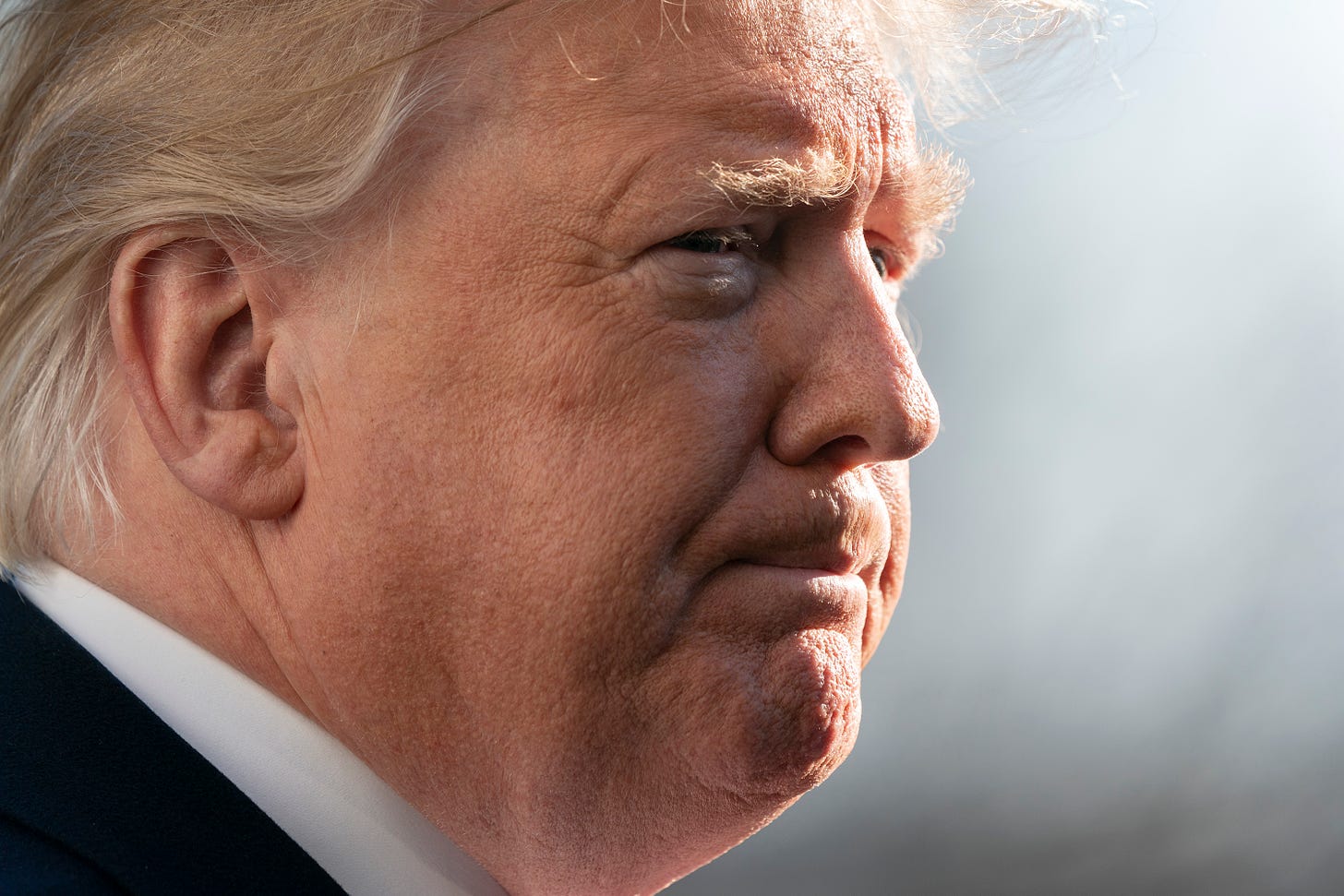There Is a Crisis at the Border. Trump Created It.
He made it happen and a wall isn't going to solve it.
President Trump’s Oval Office address Tuesday reminded me of the old story about the man who killed his parents, then begged the judge for mercy because he was an orphan. Because indeed there is a humanitarian crisis at the border with Mexico. And it’s one almost entirely of the Trump administration’s making.
While illegal immigration to the United States continues to decline and the illegal population living here is now 1.5 million fewer than at its peak in 2006, there has been a shift in the type of migrants seeking entry at our southern border. In the last fiscal year, almost 160,000 thousand migrants in families—including 50,000 unaccompanied alien children—crossed the border. The overwhelming majority were fleeing violence and poverty in their home countries. And for the most part, they didn’t sneak into the United States, but rather turned themselves in to border agents, claiming asylum under U.S. law.
This is not a new problem. But the Trump administration chose to deal with it by putting children and their parents in holding facilities meant to house just a fraction of this number and is now detaining them indefinitely in tents, warehouses, and on military bases. Until the courts intervened, the administration chose to separate even very young children from their parents, hoping that this draconian measure would discourage more families from coming. So yes, there is a humanitarian crisis at the border, but not one that poses a security threat to the United States or can be solved by building a wall.
The president’s speech laid no groundwork to resolve the government shutdown. His only concession was to offer to construct a steel barrier rather than a concrete wall and then to claim (falsely) that his new trade deal with Mexico—which has yet to be ratified—would somehow “pay” for the wall. It was vintage Trump: He blamed illegal immigrants for the fact 800,000 Americans won’t be getting a paycheck this week. Is there anything for which Trump can’t scapegoat illegal immigrants? Crime? The opioid epidemic? Low wages? He blamed them for all of these ills and more in the course of his speech. And he’s not alone. Trump’s allies blame illegal immigrants for everything from traffic gridlock and pollution to bringing leprosy into the U.S.
From the standpoint of good government it is madness for Trump to be shutting down the government in order to try to pass a single program that has little popular support. Because while Trump’s base still favors building a wall, most Americans are unenthusiastic. If the wall truly was a good idea, then it should be easy for Trump to achieve it through the normal legislative process: Convince Americans that the wall is important, and allow them to pressure their representatives. The fact that Trump wasn’t able to do this even when his party had unified control of the government is telling.
His wooden performance Tuesday evening is not likely to change many minds, even with his misleading statistics on immigrants and crime and his outright false tale of “coyotes” trafficking 20,000 children across the border each month.
The effects of Trump’s government shutdown are starting to spread beyond the lives of the 800,000 federal employees who are out of work. Airline pilots are now complaining that our airspace is less safe with air traffic controllers and others working without pay. The Food and Drug Administration has stopped its routine food inspections. The Environmental Protection Agency has furloughed 95 percent of its workers. The Federal Emergency Management Agency has issued stop-work orders to its contractors.
On Thursday, President Trump will take his wall-funding act to the border. “It’s not going to change a damn thing, but I’m still doing it,” he reportedly told a group of TV anchors in an off-the-record lunch Tuesday.
You could say the same thing about the wall itself.




